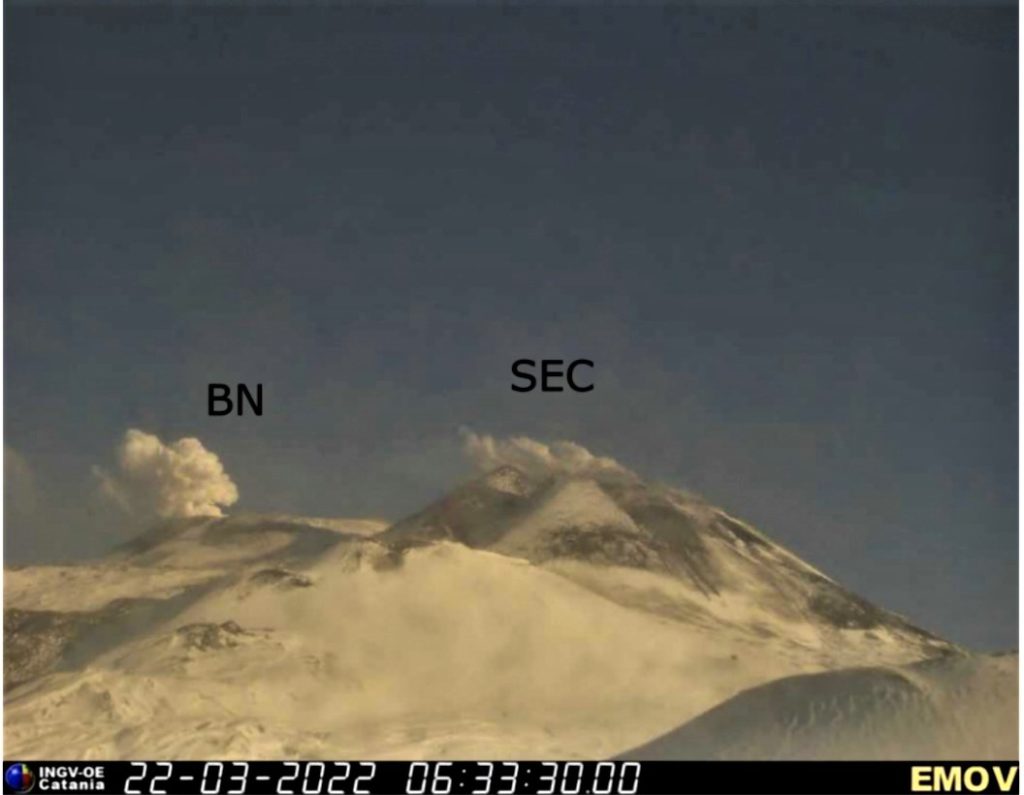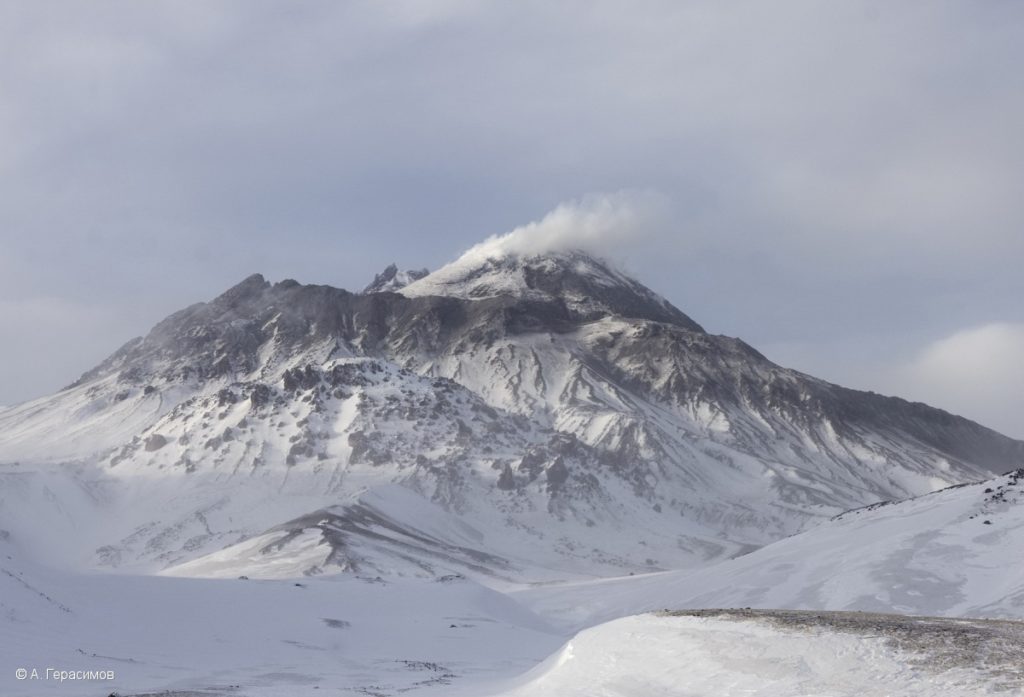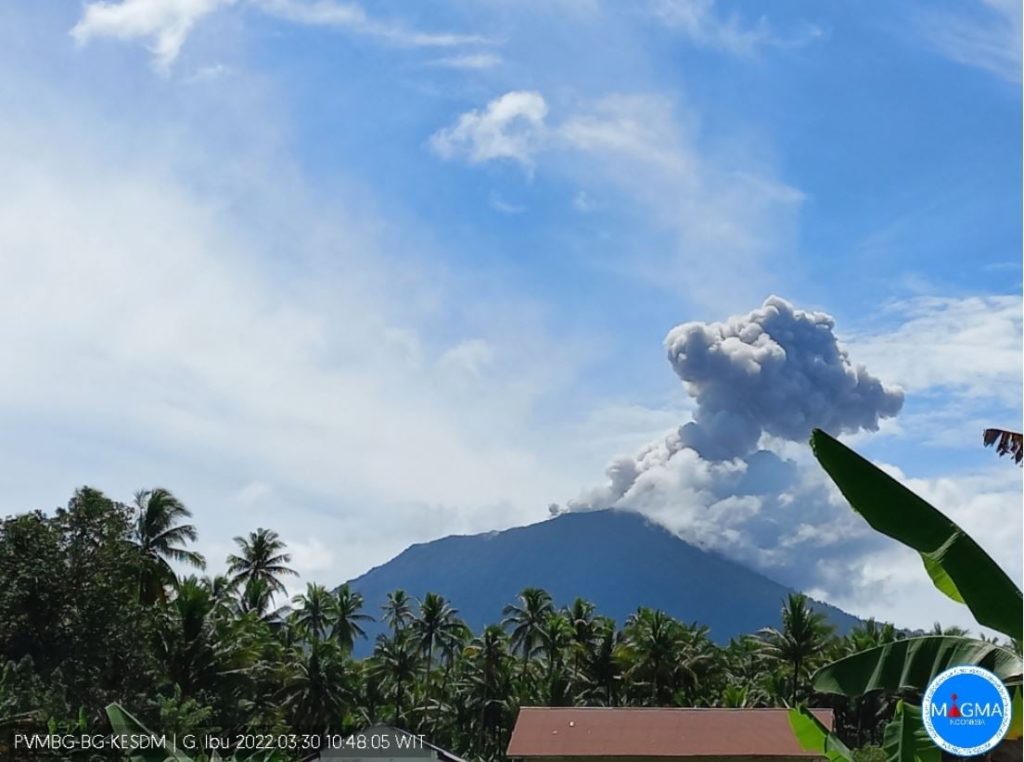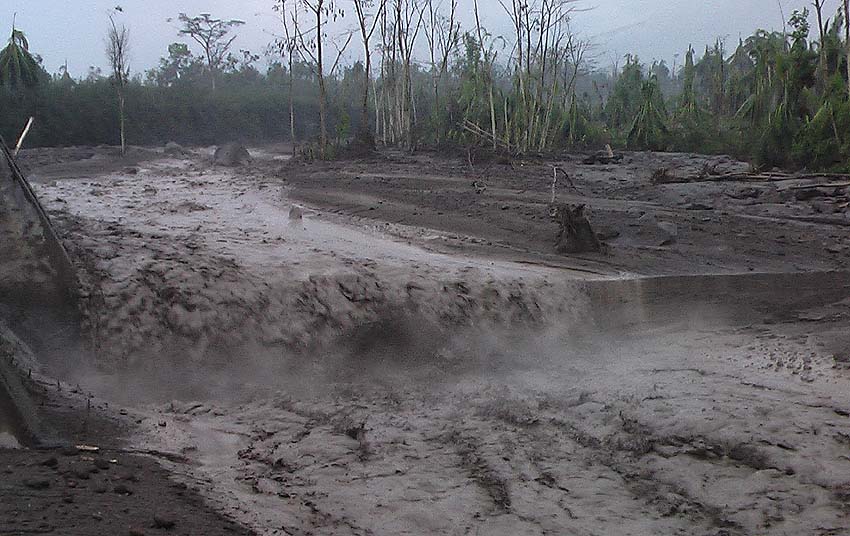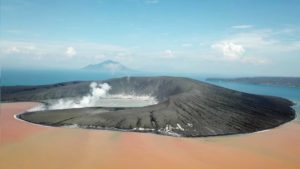April 01 , 2022.
Italy / Sicily , Etna :
WEEKLY BULLETIN, from March 21, 2022 to March 27, 2022. (issue date March 29, 2022)
ACTIVITY STATUS SUMMARY
In the light of the surveillance data, it is highlighted:
1) VOLCANOLOGICAL OBSERVATIONS: Variable rate degassing activity at the summit craters.
2) SEISMOLOGY: Low seismic activity of fracturing. Low tremor amplitude, sources located under the central craters.
3) INFRASOUND: Discrete infrasound activity near Bocca Nuova. Low amplitude of events
4) GROUND DEFORMATIONS: Ground deformation monitoring networks have not recorded any significant changes over the past week.
5) GEOCHEMISTRY: SO2 flux at a low level.
The soil CO2 flux shows increasing average values.
The partial pressure of dissolved CO2 in groundwater shows values in seasonal variability.
Helium isotope ratio shows high values (03/23/2022).
6) SATELLITE OBSERVATIONS: Thermal activity in the summit area was at a low level after the lava fountain on Feb 21, 2022.
VOLCANOLOGICAL OBSERVATIONS
The monitoring of the volcanic activity of Etna, during the week in question, was carried out by analyzing the images of the network of surveillance cameras of the INGV, Osservatorio Etneo (INGV-OE). The bad meteorological conditions made discontinuous the observation of the volcanic activity thanks to the network of cameras.
Activity at the summit craters did not show significant changes from what had been observed the previous week, continuing with degassing activities mainly carried out by the Bocca Nuova and Southeast Crater craters. .
The sources of the tremor are located under the central craters, at a level between 2500-3000 m altitude.
Source and photo : INGV
Kamchatka , Bezymianny :
55.97 N, 160.6 E;
Elevation 2882 m (9453 ft)
Aviation Colour Code is YELLOW
The extrusive-effusive eruption of the volcano continues. Aerosol clouds and ash plumes from hot avalanches could occur at any time. Ongoing activity could affect low-flying aircraft.
The extrusive-effusive eruption of the volcano continues, a strong fumarolic activity, and an incandescence of the lava dome, and hot avalanches accompanies this process. Hot avalanches collapsed from the dome top were noted on 25 and 31 March, ash clouds rose up to 4 km a.s.l. Satellite data by KVERT showed a thermal anomaly over the volcano all week; on 25 and 31 March, ash clouds were observed at a distance of 40 km to the east and 20 km to the southwest of the volcano, respectively.
Source : Kvert.
Photo : A. Gerasimov ( 30/3/2021 )
Philippines , Taal :
TAAL VOLCANO BULLETIN 01 April 2022 8:00 AM
Three (3) phreatomagmatic bursts from the Main Crater at 10:39AM, 10:47AM, and 10:55AM yesterday were recorded by the Taal Volcano Network or TVN based on seismic records and visual cameras. These events produced 500 meter- to 900-meter-tall plumes that drifted southwest.
In the past 24-hour period, the Taal Volcano Network recorded thirteen (13) volcanic earthquakes, including three (3) volcanic tremor events having durations of two (2) to three (3) minutes, and ten (10) low-frequency volcanic earthquakes. Activity at the Main Crater was dominated by upwelling of hot volcanic fluids in its lake which generated plumes 2,000 meters tall that drifted southwest. Sulfur dioxide (SO2) emission averaged 7,856 tonnes/day on 31 March 2022. Temperature highs of 63.7°C were last measured from the Main Crater Lake on 25 February 2022. Based on ground deformation parameters from electronic tilt, continuous GPS and InSAR monitoring, Taal Volcano Island and the Taal region has begun deflating in October 2021.
The Alert Level 3 (Magmatic Unrest) prevails over Taal Volcano. This means that there is a magmatic intrusion at the Main Crater that may further drive succeeding eruptions. DOST-PHIVOLCS strongly recommends Taal Volcano Island and high-risk barangays of Bilibinwang and Banyaga, Agoncillo and Boso-boso, Gulod and eastern Bugaan East, Laurel, Batangas Province be evacuated due to the possible hazards of pyroclastic density currents and volcanic tsunami should stronger eruptions subsequently occur. The public is reminded that the entire Taal Volcano Island is a Permanent Danger Zone (PDZ), and entry into the island as well as high-risk barangays of Agoncillo and Laurel must be prohibited. All activities on Taal Lake should not be allowed at this time.
Source : Phivolcs.
Photo : Terry Villanueva.
Indonesia , Ibu :
VOLCANO OBSERVATORY NOTICE FOR AVIATION – VONA
Issued : March 30 , 2022
Volcano : Ibu (268030)
Current Aviation Colour Code : ORANGE
Previous Aviation Colour Code : orange
Source : Ibu Volcano Observatory
Notice Number : 2022IBU16
Volcano Location : N 01 deg 29 min 17 sec E 127 deg 37 min 48 sec
Area : North Maluku, Indonesia
Summit Elevation : 4240 FT (1325 M)
Volcanic Activity Summary :
Eruption with volcanic ash cloud at 01h48 UTC (10h48 local).
Volcanic Cloud Height :
Best estimate of ash-cloud top is around 7440 FT (2325 M) above sea level, may be higher than what can be observed clearly. Source of height data: ground observer.
Other Volcanic Cloud Information :
Ash-cloud moving to south.
Remarks :
Eruption and ash emission is continuing.
Source et photo : Magma Indonésie.
Ecuador , Sangay :
DAILY REPORT OF THE STATE OF SANGAY VOLCANO, Thursday March 31, 2022.
Information Geophysical Institute – EPN.
Surface activity level: High, Surface trend: Ascending.
Internal activity level: High, Internal trend: No change.
Seismicity: From March 30, 2022, 11:00 a.m. to March 31, 2022, 11:00 a.m.:
Explosion (EXP) 47
Long Periods (LP) 20
Emission Tremors (TREMI) 45
Rains / Lahars:
No rain was recorded in the area. **In the event of heavy rains, these could remobilize the accumulated materials, generating mudslides and debris that would descend on the flanks of the volcano and flow into the adjacent rivers.**
Emission / ash column:
The Washington VAAC recorded 5 gas and ash emission alerts with heights of 870 meters above crater level, heading west and southwest.
Gas:
The MOUNTS system records 2052.8 tonnes of SO2 on 03/30/22 at 7:25 p.m. TL
Other Monitoring Parameters:
The FIRMS system registers 36 thermal alerts, while the MIROVA system registers 3 moderate alerts in the last 24 hours
Observation:
Yesterday afternoon, through images shared by ECU 911, an incandescence was observed at the level of the crater. At the moment the area of the volcano is cloudy.
Alert level: Orange.
Source : IGEPN.
Photo : Webcam
Guatemala , Fuego / Santiaguito :
SPECIAL VOLCANOLOGICAL BULLETIN, BEGINNING OF THE LAHARES SEASON, FUEGO AND SANTA MARÍA-SANTIAGUITO VOLCANOES.
Monitoring of monthly climate forecasts and forecasts from the Department of Meteorological Research and Services, suggest an early start to the rainy season in the Bocacosta region between the months of March and April. The fact that in recent days, rain has been recorded on the Volcanic Arc in the afternoon and evening, the Volcanology section reports the start of the lahar season on the Fuego and Santa María-Santiaguito volcanoes.
Following the eruptive activity recorded on these volcanoes during the months of February and March, the ravines located on the slopes of these volcanic buildings are filled with deposits of boulders and ash produced by pyroclastic flows. These are mainly concentrated in the Ceniza and Las Lajas ravines, in the case of the Fuego volcano, and in the San Isidro ravine in the case of the Caliente dome of the Santa María-Santiaguito complex. In these ravines and channels, the first lahars of the season should be particularly large and eventually descend as a hot flow accompanied by water vapor and the smell of sulfur, due to the relatively cool deposits of recent eruptions. Likewise, the rest of the ravines and channels of the two volcanoes also contain volcanic materials accumulated by eruptions that occurred in previous years.
When rains occur for several days in a row on this volcanic material, it mixes with the water producing a flow of debris that carries mud, boulders between a few centimeters and several meters in diameter, trunks and tree branches and almost anything in their way as they descend through the ravines and channels of these two volcanoes. These flows cause rivers to swell, making them impossible to cross, and the materials they leave behind impede the passage of vehicles for hours or days after the event. This can cut communities off by blocking their usual routes of transit or evacuation.
Source : Insivumeh.
Photo : Caroline Sarrazin , Rés-EAUx .

